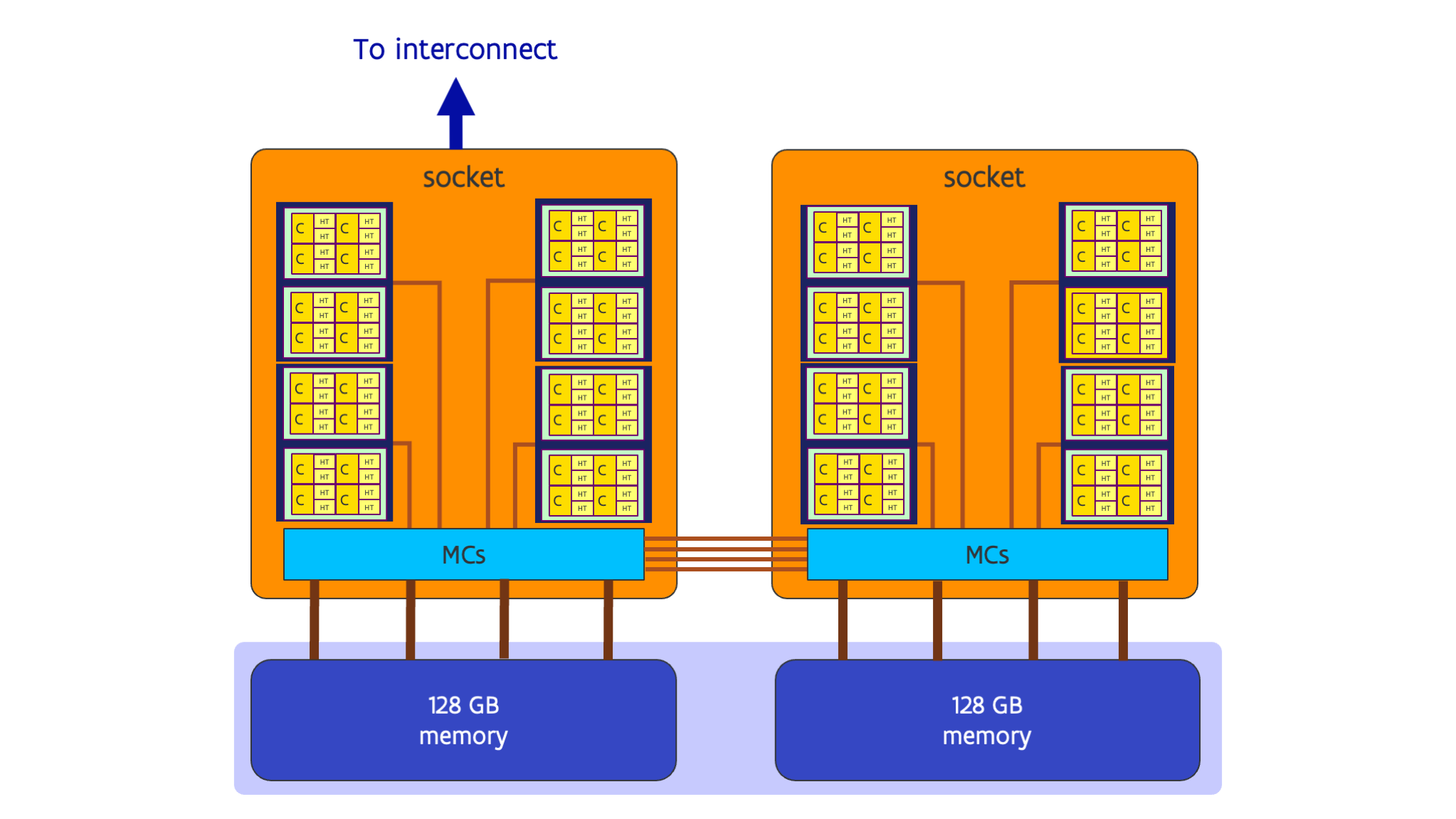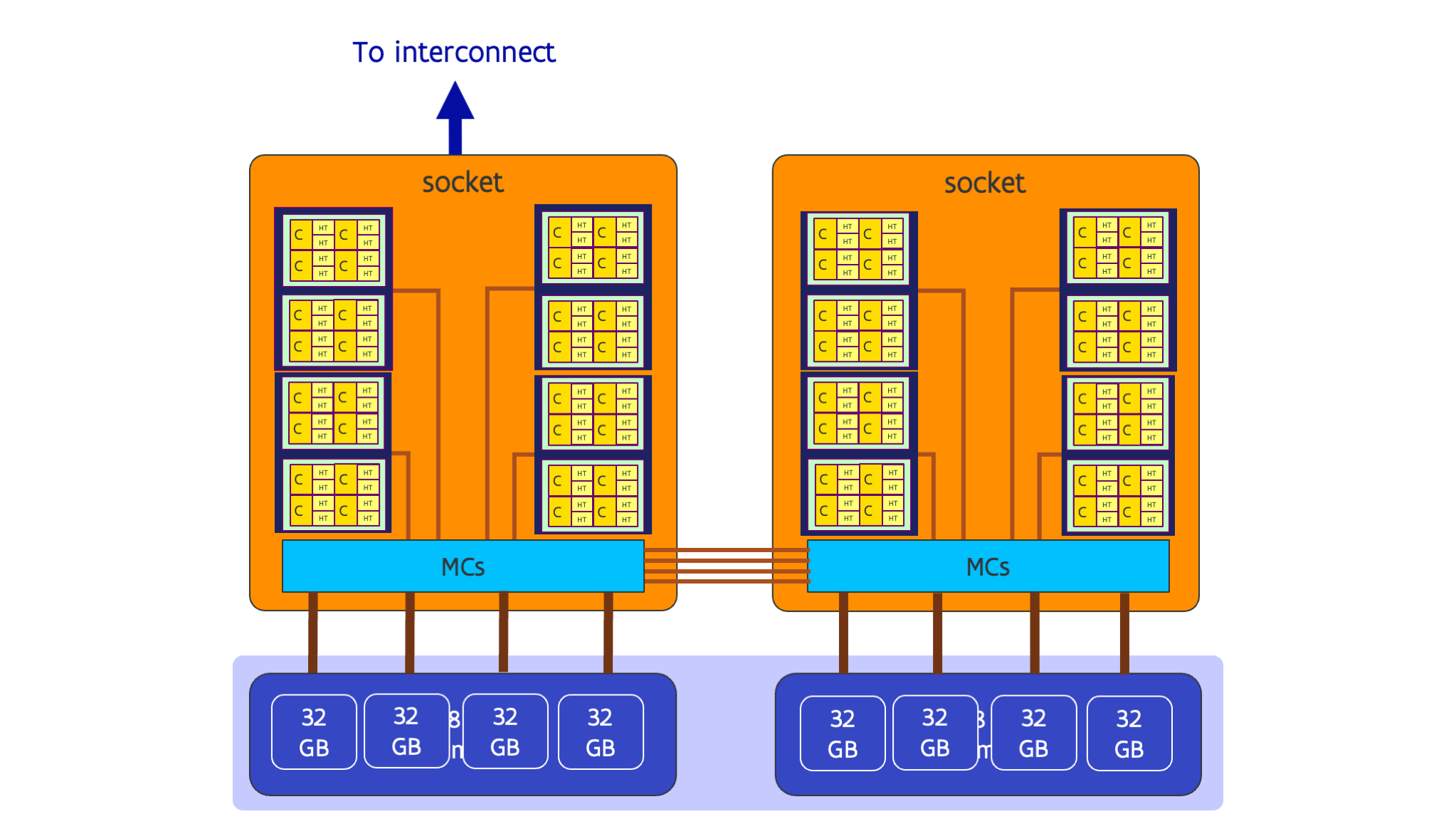Some node architectures¶
We'll come back to this later also in more detail after discussing memory architectures.
AMD Rome node¶
Examples of clusters that use this processor:
- Login nodes and large memory nodes on the EuroHPC pre-exascale system LUMI (using a 64-core version)
- Phase 1 of the Flemish Tier-1 system hortense (using a 64-core version in the regular compute nodes)
- Older nodes of the UAntwerpen cluster Vaughan, using the 32-core variant shown in the picture in this section.

Each CPU package of the variant of the Rome CPU used in Vaughan contains 5 chiplets (9 in LUMI and hortense). 4 chiplets (8 in LUMI and hortense) are identical and contain 2 groups of four cores each, with each core supporting 2 hardware threads. The group is also called the Compute Core Complex (CCX), the die the Compute Core Die or CCD. Each CCD then connects to the other die, the I/O die, with an Inifinity Fabric link that is very similar to the links that are also used to connect the I/O dies in the two sockets. The I/O die also contains the memory controllers which in case of Vaughan connect to 128 GB of memory per socket. The sockets are connected through 4 Infinity Fabric or xGMI links.
In reality the architecture is a little bit more complex as the following figure suggests:

The I/O chiplet itself is logically subdivided in 4 quarters with each quarter connecting to one compute die in Vaughan or 2 compute dies in those variants that have 8 CCDs per package, and each quarter also has its own memory controller connecting to 32 GB of memory. Though it is possible to let the four quarters function as one, in HPC applications it is often beneficial to let them operate as if they are 4 separate memory domains, giving slightly better memory performance for memory access via the memory controller attached to the quarter containing the core, and maybe slightly slower to memory in the other quarters. Many supercomputers with these processors have their nodes configured to work in that way so that the operating system might report 8 NUMA domains rather than 2.
One of the sockets (and in fact the I/O die in that socket) is then connected to the interconnect network card.
The European pre-exascale supercomputer LUMI operated by CSC in Finland, and the newer compute nodes of Hortense use 64-core third generation EPYC processors (code-named Milan) that have one core group of 8 cores per chiplet, so the CCXs and CCDs are equal, but otherwise the design is again similar to the design of the Rome nodes.